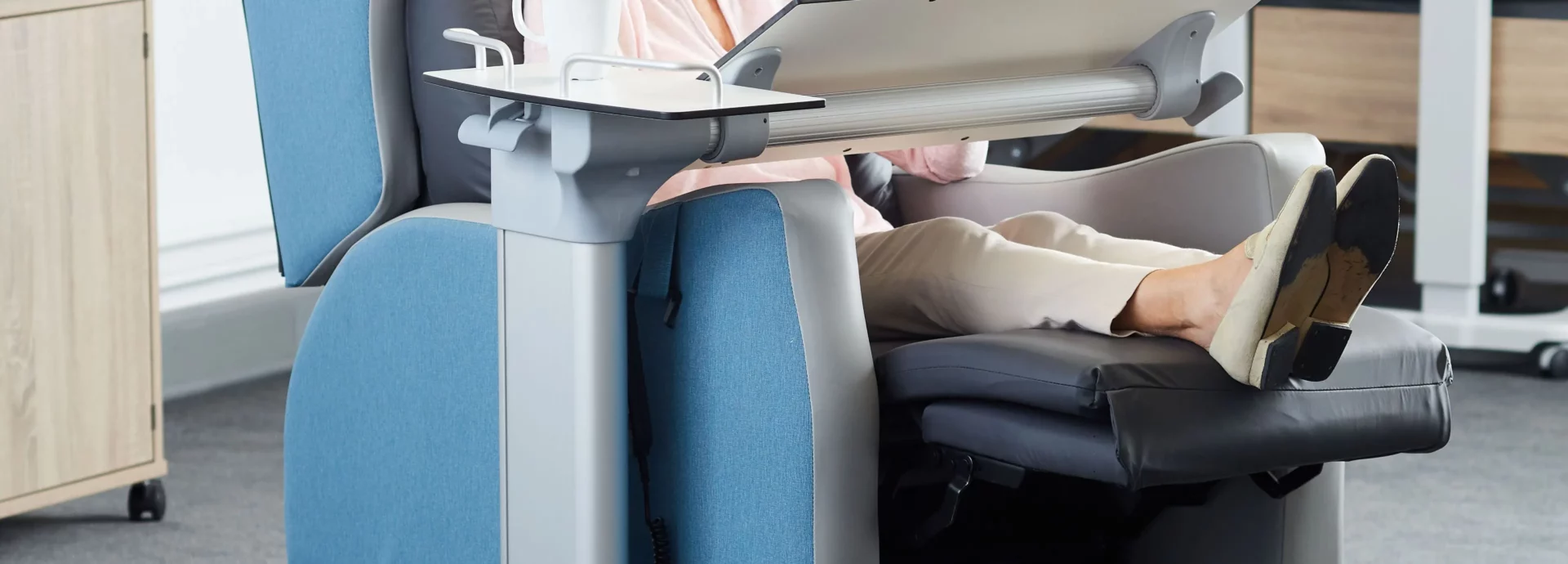Seat Fabrics for Infection Control
Posted on 6 November 2018 By Aaron Stretton

In This Article
Infection control is extremely important in multi-user environments like hospices, care homes, and particularly hospitals. Seats and chairs are one…
Infection control is extremely important in multi-user environments like hospices, care homes, and particularly hospitals. Seats and chairs are one of the most common pieces of equipment that can get cross-contaminated, so getting the right seat fabrics for infection control is important.
So what infection control fabrics can be used on your seats? And how do they help?
What is infection control?
The term infection control refers to the practices and standards put in place in healthcare environments that will help to prevent the spreader of infection between patients. Healthcare equipment is an area of concern because it is used by several different patients and can be contaminated.
Cross-infection and contamination can be controlled and minimised with a few simple solutions; choosing the right seat fabric is just one way you can help.
What material is best for infection control?
Good seat fabrics for infection control need to be easy to clean, durable, and waterproof to keep the seat and cushioning as protected as possible from any fluid ingress or bacterial growth.
Vinyl is a particularly robust material that is waterproof and hard-wearing. It essentially provides a tough exterior to the seat that will help to protect it from any tears or leaks.
Having an anti-microbial coating can also help to prevent the spread of infection. Anti-microbial materials kill any bacteria they come in contact with.
Not all vinyls have an anti-microbial coating, but the Panaz vinyls that we use on our chairs do.
If you want the best fabric for infection control, then vinyl is the way to go. But please be aware that there are less colour and pattern options with vinyl.
What about pressure relief?
One prime concern for hospitals and other healthcare environments is pressure relief. But vinyls are typically much stiffer and less breathable, so they aren’t as good for pressure care purposes.
If you’re looking for a material that’s good for infection control but doesn’t compromise your pressure relief, then Dartex materials are good. They are softer to touch and more malleable to allow the cushions to mould to the patient’s body.
Dartex materials are also waterproof and can be coated with an anti-microbial substance.
Other areas to consider
It’s worth noting that with any chair materials being used to help infection control, you want to make sure they’re as smooth as possible. Any fabrics with grains or textures actually provide nooks and crannies for bacteria to grow and contaminate other people.
Another thing to bear in mind on seating is the stitching and seams. It is recommended that these areas be kept as small as possible and cleaned regularly to keep the chance of cross-infection to a minimum.
You will probably use a chlorine solution to clean your seat, so make sure any fabrics you choose can be used with chlorine.
Summary
The best seat fabrics for infection control are vinyls because it’s so durable and easy to clean. But if you have other concerns like pressure care or designs and colour schemes, then other materials might be more suitable.
We always recommend double-checking that whatever seat fabric you choose can be cleaned with a chlorine solution. Any good seating supplier should be able to demonstrate their chairs first and give you some sample materials to get an idea first.
So if you need some new seating and infection control is key, then get in touch with our team!
Speak to The Experts
Need assistance with product enquiries, general inquiries, or product support? Our Phonelines are open 9am - 5pm Monday to Friday
0113 519 0319
Or, fill out the form for a call back.
